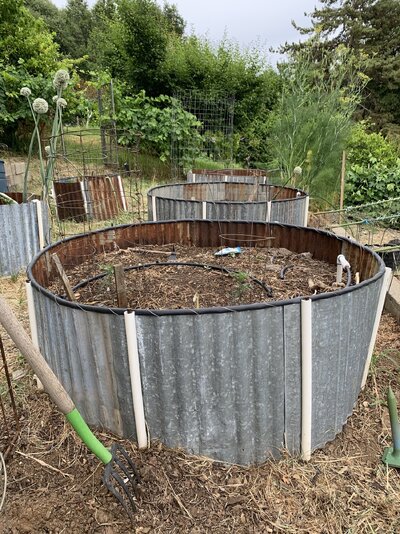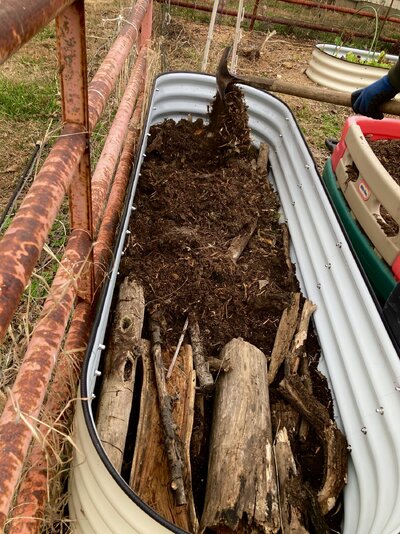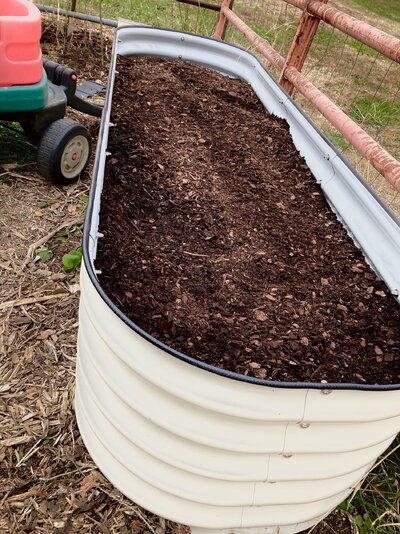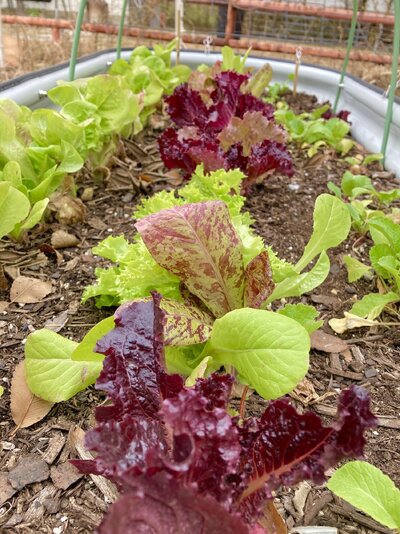Over the years, I have become a big advocate for the hügelkultur method to use in raised beds. It just works for me. I understand the theory of the hügelkultur method, but does it deliver in actual use?
I want to share a link to the following video where they tear apart a 3-year-old hügelkultur raised bed and take a good look at how it is performing. If you are not convinced to give hügelkultur raised beds a try now, you probably will want to consider it after watching this 10-minute video...
A few points that I think are worth noting again:
He used freshly cut logs in his hügelkultur build. That works, and after 3 years in the raised bed, they could see the wood softening up and becoming more spongy, which holds water better. As the wood ages and breaks down, it feeds the soil and retains water better. Based on their 3 year look, they estimated that the wood logs in that bed might be good for about 20 years!
I use freshly cut wood if I have to clean up the yard. I had 2 big trees fall down last winter and used the wood to make some new raised beds this spring. Why not? However, if you want even better results earlier, then pick out some old rotting logs to start with.
The hügelkultur beds get better with age. As the wood decomposes, it feeds the soil from below. The rotting wood also retains more water as it continues to turn into a giant sponge. I have seen this in my hügelkultur beds as well. They just seem to perform better with each passing year.
He mentioned that his first attempt at making hügelkultur raised beds was not a complete success. Basically, he failed to adequately fill the voids between the logs and his raised bed soil level dropped almost 1 foot the first year! That is just crazy!
After he figured out that it was necessary to fill those voids between the logs, then the soil level dropped the normal 1-2 inches per year. That is what you want. Every year, you just top off that 1-2 inches with fresh compost. Perfect!
As to filling those voids, he used potting mix, which I find is pretty expensive. I can get free wood chips at our local county landfill, and that is what I use to fill the voids Still free for me to use as a filler, and being wood, it will also sponge up the water and break down over the years feeding the soil. What's not to love about that?
I'd love to hear any feedback on this video, and if you have any ideas on how to make hügelkultur raised beds even better. I have had great results with my hügelkultur raised beds, but I'm always looking to make improvements. Thanks.
Addendum: I originally posted this on the What did you do in the garden today? thread. But that thread moves too fast, topics are quickly forgotten, and I thought this topic might be better served if I started a separate thread.



 Time to upload some pictures of my newly designed pallet wood raised garden bed. I was plenty happy with my old raised bed design, but I specifically wanted to redo this design to use the pallet wood notched 2X4 stretchers without cutting them. With that in mind, I took apart some pallets that had 4 foot long 2X4's, all of the same thickness, or very close to it. The beauty of this step is that you don't need to have the 2X4's nail free in this build. That means, you can use a reciprocating saw to cut off the pallet planks if you want and just leave the nail bottoms in the 2X4's. Or you can use a circular saw to cut off the edges of the planks and just use the shorter 16 inch long slats for the sidewalls. Both those methods make pallet breakdown fast.
Time to upload some pictures of my newly designed pallet wood raised garden bed. I was plenty happy with my old raised bed design, but I specifically wanted to redo this design to use the pallet wood notched 2X4 stretchers without cutting them. With that in mind, I took apart some pallets that had 4 foot long 2X4's, all of the same thickness, or very close to it. The beauty of this step is that you don't need to have the 2X4's nail free in this build. That means, you can use a reciprocating saw to cut off the pallet planks if you want and just leave the nail bottoms in the 2X4's. Or you can use a circular saw to cut off the edges of the planks and just use the shorter 16 inch long slats for the sidewalls. Both those methods make pallet breakdown fast. If you made it this far, I would love to hear some feedback on this new pallet wood raised bed design. I put a number of hours of thinking into this project before I put it together but would love to hear any comments others may have. Thanks in advance for your thoughts. Later....
If you made it this far, I would love to hear some feedback on this new pallet wood raised bed design. I put a number of hours of thinking into this project before I put it together but would love to hear any comments others may have. Thanks in advance for your thoughts. Later....
 As much as I like my hügelkultur raised beds, I don't think I could pretend to compete with a professional who is constantly feeding and watering their plants, even if in-ground or a "normal" non-hügelkultur raised bed.
As much as I like my hügelkultur raised beds, I don't think I could pretend to compete with a professional who is constantly feeding and watering their plants, even if in-ground or a "normal" non-hügelkultur raised bed.

